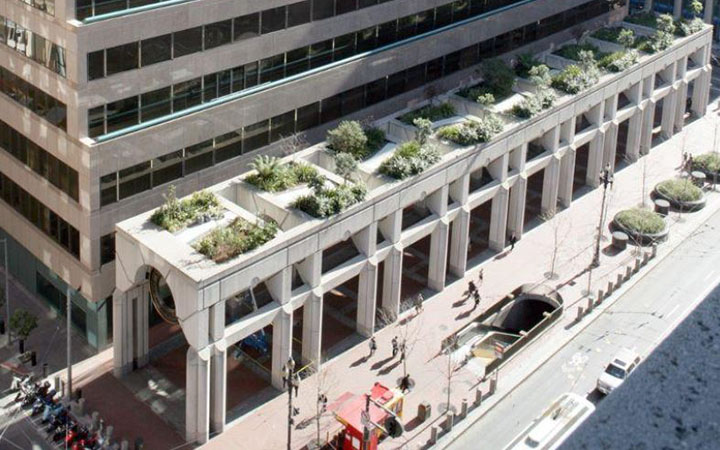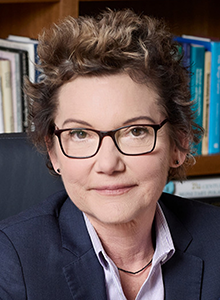Federal Reserve Bank of San Francisco
Updated June 2025
The Federal Reserve Bank of San Francisco is led by President and CEO Mary C. Daly. The Twelfth Federal Reserve District, headquartered in San Francisco, includes Alaska, Arizona, California, Hawaii, Idaho, Nevada, Oregon, Utah, and Washington, and also serves American Samoa, Guam, and the Commonwealth of the Northern Mariana Islands. The San Francisco Fed has branch locations in Los Angeles, Portland, Seattle, and Salt Lake City and a cash processing center in Phoenix.

The San Francisco Fed and the West: Reinventions and Reflections
The Twelfth Federal Reserve District is the largest in the Federal Reserve System. Today, the District's nine western states, two territories, and a commonwealth cover 1.4 million square miles, or 37 percent of the nation's area, and they are home to more than 70 million people, roughly one-fifth of the U.S. population.
Setting the Stage for Growth
Of course, the region looked much different in 1913 when Congress created the Federal Reserve. The seven western states that initially comprised the Twelfth District were considered the American frontier. The San Francisco Fed's main jobs were to supply currency, clear checks, and provide credit to banks in its territory. Arizona, California, Idaho, Nevada, Oregon, Utah, and Washington had 1,733 banks and made up roughly 6% of all banks in the United States in 1913. Although this constituted a small percentage of the country's financial intermediaries, banking activity had nevertheless been growing rapidly.
One distinctive innovation in many western states was their reliance on branch banking, pioneered to better serve the needs of the population. Branching was an effective means of transferring money between regions of a state where demand was high in one locality and low in another, creating the model familiar to us now. Within a few years, the San Francisco Fed established branches in Spokane (1917—later consolidated with Seattle in 1938), Seattle (1917), Portland (1917), Salt Lake City (1918), and Los Angeles (1920) to work with the banks in those regions.
The District's economy was also much different than today, with activity focused on agriculture and natural resource extraction. As the San Francisco Fed's first Annual Report noted in 1915: "This district is enormously rich in natural resources and surpasses in variety of products." Just a few years before the Federal Reserve Organizing Committee was contemplating District boundaries, with stakeholders across the nation, 49% of the nation's gold, 67% of its silver, 57% of its copper, and 61% of its lead were produced in the Twelfth District.
Yet, as we supplied the nation with the output from our farms, mines, forests, and oil fields, we didn't manufacture much of anything. In 1909, the value of Twelfth District manufactured products equaled only one-third of the output of New York City's factories.
From a Manufacturing Force to a Global Technology Hub
Our profile changed dramatically as we went through our first reinvention, a shift that culminated in the decades after World War II. Hydroelectric power, a concentration of engineering know-how, and the burgeoning growth of Western markets fueled a nascent factory network, turning our region into a manufacturing powerhouse. The region's largest state, California, led the way, starting with food processing and oil refining, and then expanding into a broad range of light and heavy manufacturing. As economic historian Paul Rhode wrote: "What had been an unimportant industrial location in 1900 became the nation's number one manufacturing state by 1977."
This laid the groundwork for our second reinvention—a shift to a service and knowledge-based economy. As the forces of globalism swept the world, manufacturing migrated to the developing world. Production in sectors such as aviation and information technology dwindled in our District. At the same time, we cemented our status as a center of research, engineering, and design in those sectors. And our location on the Pacific Rim connects us with the emerging industrial and technological powers of Asia.
The Twelfth District is also a hub for innovation and invention, with leading research institutions, venture capital firms, and entrepreneurs working together to develop and deploy pioneering technologies across the economy. In 1996, we established one of the first public web site presences in the Federal Reserve System, a symbol of our commitment to communication and transparency as a public service organization. By early 1998, the Twelfth District was already piloting two important web applications: cash services and check image retrieval.
Over more than a century, the San Francisco Fed has remained focused on its core mission and functions: to support monetary policy, strengthen financial institutions, and enhance the payments systems. Our territory has expanded beyond the Arctic Circle and across the Pacific to include Alaska, Hawaii, Guam, and the Northern Mariana Islands. We opened the Phoenix Cash Processing Center in 2001 to serve the needs of the area and the people in it, creating the first Federal Reserve entity of its kind at that time built specifically to store currency.
Spanning glaciers, beaches, farmland, deserts and mountain peaks, our landscape is as varied as the businesses and communities that comprise our vibrant District and are at the heart of our work. The Twelfth District today is home to a broad array of industries—including agriculture, construction, finance, manufacturing, entertainment, and tech—that employ more than 31 million workers.
Written by the Federal Reserve Bank of San Francisco as of June 2025. See disclaimer and update policy.


 X
X  facebook
facebook
 email
email